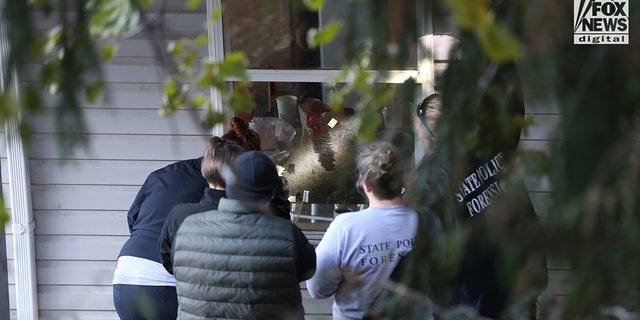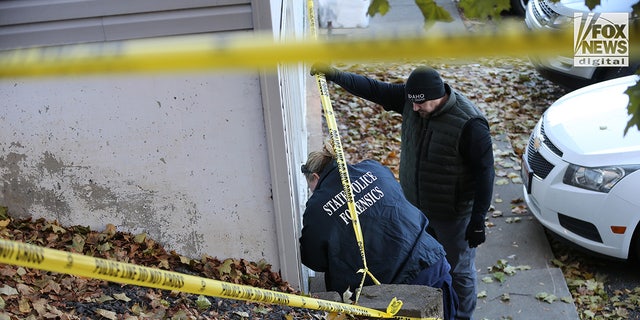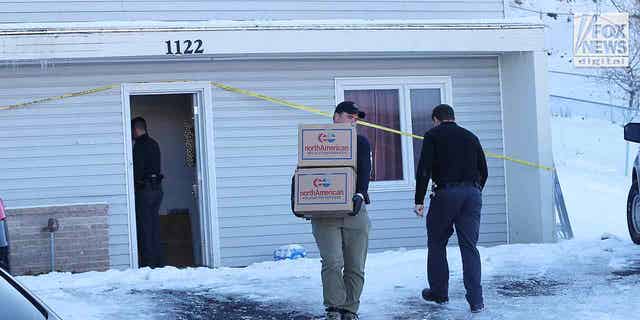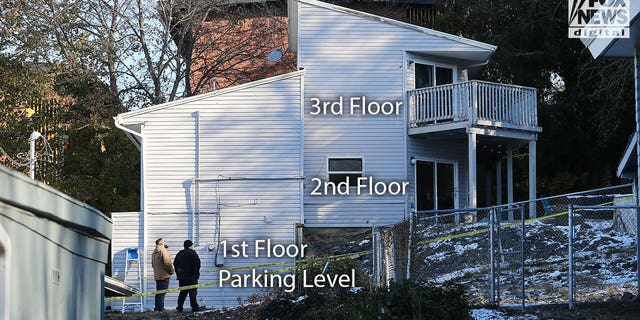Idaho murder victims’ hands bagged at scene to preserve possible evidence: coroner
MOSCOW, Idaho – FIRST ON FOX: The hands of four murder victims stabbed in their house off the University of Idaho campus on Nov. 13 may hold evidence that is crucial to the unsolved case.
Police are still working to determine who killed the four college students – Ethan Chapin, 20; Xana Kernodle, 20; Kaylee Goncalves, 21; and Madison Mogen, 21 – while they were sleeping in their off-campus home between 3 a.m. and 4 a.m. on Nov. 13, a Sunday.
As part of their crime scene preservation, Idaho investigators bagged the victims’ hands in an effort to save possible clues before moving their bodies out of the crime scene, Latah County Coroner Cathy Mabbutt told Fox News.
Forensic experts say it’s possible the four victims’ hands may contain evidence, such as skin or hair under their fingernails, that could provide major clues regarding the suspect’s identity. Their hands may also have touched DNA if they made physical contact with the killer or killers.
UNIVERSITY OF IDAHO STUDENTS KILLED: A TIMELINE OF EVENTS
“This is good crime scene protocol, which also they can say that if they did this right, then more than likely everything else was done right, too – which should allay some of the concerns from people,” said Joseph Giacalone, a John Jay College of Criminal Justice professor and retired NYPD sergeant.
IDAHO MURDERS: FATHER OF SLAIN VICTIMS SAID SHE HAD ‘BIG OPEN WOUNDS’ CALLS POLICE ‘COWARDS’
“When you have an up-close attack like this, the chances are good that the victim scraped at the face or the arms [of the assailant] as they try to defend themselves. So this is an awesome development,” he told Fox News Digital.

Idaho State Police Forensic Services Laboratory Systems Director Matthew Gamette told Fox News Digital, “DNA can be found in any kind of cellular material.” In crime scenes, investigators try to determine whether “someone’s touched a surface or handled a surface or whether they’ve left blood, saliva – any kind of bodily fluids” and then “identify areas where there might be tissue or touch DNA.”
IDAHO POLICE SEARCH FOR WHITE HYUNDAI ELANTRA IN MOSCOW COLLEGE MURDER CASE
“And then we would be trying to develop DNA profiles from those surfaces, in the case of latent prints,” he explained. “We might be working a room or a car or something of that nature to be able to develop latent prints or fingerprints from a person that are visible to the naked eye. And then we would be looking to either compare those to known individuals, or we would be looking to put them in a database to see if we can identify someone.”

Investigators do some testing at crime scenes before they collect and transport evidence to a police department’s evidence room and then the forensics lab.
IDAHO VICTIM’S FAMILY RAISING FUNDS FOR REWARD MONEY AS CAMPUS MURDER MYSTERY ENTERS WEEK 4 WITH NO ARREST
“Generally, what we’re looking to do is first to identify a potential suspect or suspects – potential perpetrators of a crime if there [are] not any,” Gamette said. “There may be some already identified. And if that’s the case, then we’ll ask the officers to collect items from them that can be used to either match to their samples from the scene or to eliminate them as potential contributors of things like fingerprints and DNA.”

If investigators are able to find DNA from the crime scene, which is not always a given depending on the complexity of the scene, police can run that information against the Idaho state DNA database, as well as the state fingerprint database and national databases in “an effort to try and identify a potential perpetrator,” the DNA analysis expert said.

The entire process can take days in some of the shortest homicide cases and up to weeks depending on the complexity of the crime scene and whether it contains mixed DNA.
Additionally, everything a scientist does “at the laboratory has to be reviewed by a second scientist to make sure that they arrive at the same conclusions that the first scientist arrived that they look at,” Gamette said.
IDAHO VICTIM’S FAMILY RAISING FUFNDS FOR REWARD MONEY AS CAMPUS MURDER MYSTERY ENTERS WEEK 4 WITH NO ARRESTS
Giacalone said the scene is not “a cut-and-dry case with DNA” due to the fact that the home where the victims were killed, a college rental just steps off campus, “probably have lots of mixtures of DNA.”

“If you found DNA specifically on the body or blood droplets in that crime scene, then you can look to get a DNA exemplar,” the retired sergeant said. “The police department has its work cut out for it to try to get a DNA exemplar.”
Police have yet to announce a suspect or any kind of motive in the quadruple murder.
Tipsters can submit information related to the crime or the vehicle to the Tip Line at 208-883-7180 or the MPD tip email, tipline@ci.moscow.id.us.
Read the full article Here


